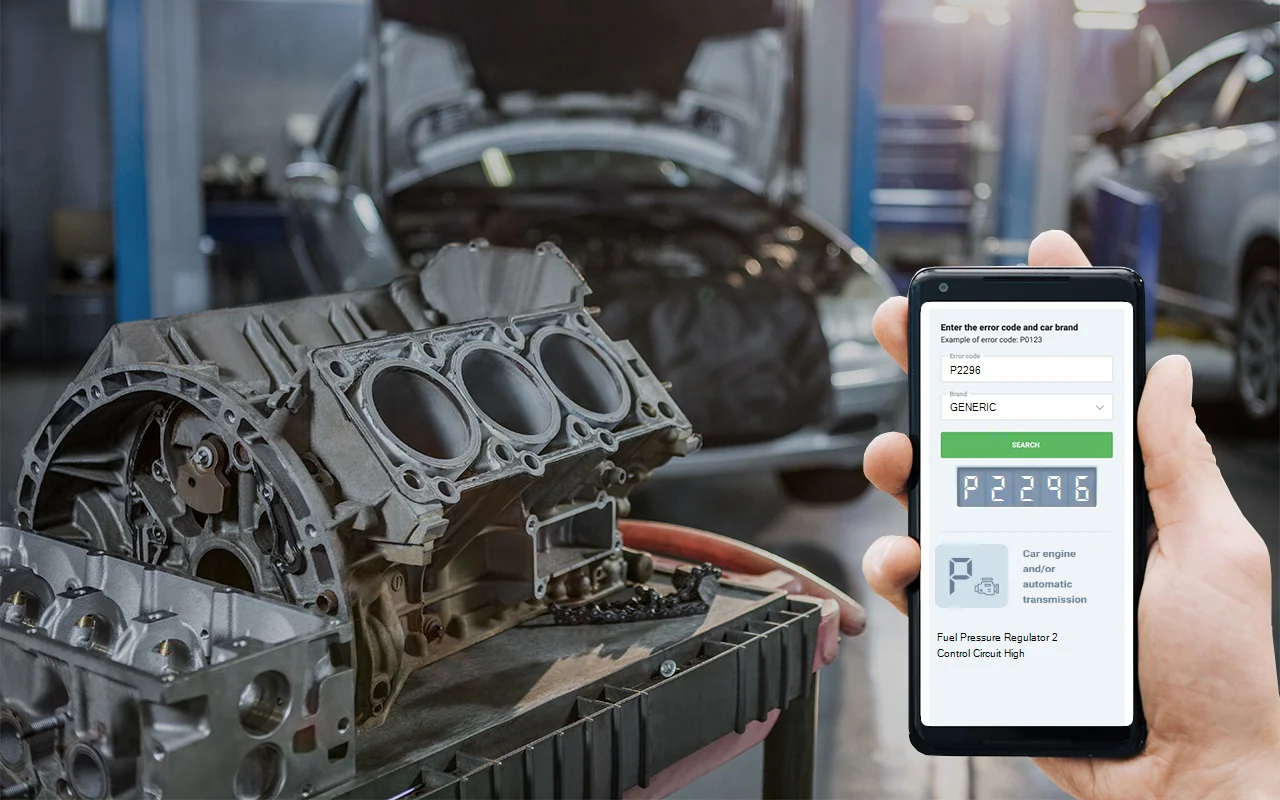Whenever I see the P2296 code pop up, I know right away I'm dealing with a voltage problem in the Fuel Pressure Regulator Solenoid 2 Control Circuit. To put it in real-world terms, your car's computer is keeping tabs on the solenoid that manages the fuel pressure in your rail-the very part responsible for feeding your engine the right amount of fuel. If the circuitry or the solenoid starts pulling more voltage than it should, that’s when the computer flags P2296. This isn’t some background system you can ignore; if it’s not working properly, your engine might end up starving for fuel or, just as bad, drowning in it. Both situations spell trouble for how your car runs, and I’ve seen them turn a smooth-running engine into a real headache in no time.
DTC P2296
Causes of P2296 trouble code
From what I’ve seen in the shop and based on the official repair info, the most common reasons for a p2296 code are:
- A short to power in the wiring harness for the fuel pressure regulator solenoid 2. This is usually from damaged, melted, or pinched wires.
- A faulty fuel pressure regulator solenoid itself-sometimes the solenoid fails internally and causes the voltage to spike.
- Corroded, loose, or damaged connectors at the solenoid or the engine control module (ECM).
- Less often, a problem inside the ECM, but that’s pretty rare in my experience.
Most often the issue is with the wiring or the solenoid, so that’s where I always start looking first.
Symptoms of P2296 engine code
If you’ve got a P2296 code, here’s what you might notice while driving:
- The check engine light will almost always be on.
- You might feel the engine running rough, especially when accelerating.
- There could be hard starting, or the engine might not start at all if the fuel pressure is way off.
- Sometimes, you’ll notice poor fuel economy or even stalling.
From experience, sometimes the only sign is the warning light, but it’s not something to ignore, even if the car seems to run okay.

Diagnosis of P2296
Here’s how I usually tackle this code, step by step:
- First, I visually inspect the wiring and connectors at the fuel pressure regulator solenoid 2. I’m looking for any obvious signs of damage-melted insulation, pinched wires, or corrosion. It’s best to have someone wiggle the harness while you watch for changes.
- Next, I unplug the solenoid and check the connector pins for corrosion or bent terminals. Don’t forget to check both sides-the solenoid and the harness.
- Then, I use a multimeter to check for a short to power in the circuit. With the ignition off, I’ll measure resistance between the solenoid control wire and battery voltage. If there’s continuity, you’ve got a short somewhere.
- If the wiring checks out, I’ll test the solenoid itself by measuring its resistance. If it’s out of spec (usually open or very low resistance), it’s likely bad.
- Finally, if everything else looks good, I’ll check the ECM connector for any signs of water intrusion or pin damage, but this is rare.
It’s best to start with the simple stuff-wiring and connectors-before moving on to the solenoid or ECM. Don’t skip the basics!

Common Mistakes when fixing dtc P2296
I’ve seen a few common slip-ups with this code:
- People often replace the fuel pressure regulator solenoid right away without checking the wiring. That’s a surefire way to waste money if the real problem is a shorted wire.
- Another mistake is not checking both ends of the connector-sometimes the issue is at the ECM side, not just the solenoid.
- Skipping the visual inspection and jumping straight to parts swapping. Honestly, most issues are found just by looking closely at the harness and connectors.
Don’t rush-take your time and check everything step by step.

Seriousness of obd2 code P2296
This is not something you want to put off. If the fuel pressure regulator circuit isn’t working right, your engine could run too rich or too lean, which can cause serious damage over time-think fouled spark plugs, damaged catalytic converter, or even engine misfires. In some cases, the car might not start at all, which could leave you stranded. You don’t want this kind of trouble on the road, and things can go south quickly if overlooked. It’s a real safety concern, especially if the engine stalls while driving.
Repair solutions for P2296 code
Here’s what usually fixes a p2296 code, based on what I’ve seen and the official repair info:
- Repair or replace any damaged wiring or connectors in the fuel pressure regulator solenoid 2 circuit.
- Replace the fuel pressure regulator solenoid if it tests faulty or out of spec.
- Clean and secure all connectors-sometimes just cleaning up corrosion does the trick.
- In rare cases, if there’s a confirmed issue with the ECM, it may need to be repaired or replaced, but that’s the last resort.
I recommend starting with the wiring and connectors, since that’s where most problems are found.
Conclusion
To sum it up, the P2296 code means your car’s fuel pressure control system isn’t happy-usually because of a wiring or solenoid issue. It’s important to address this quickly, since ignoring it can lead to bigger and more expensive problems down the line. The best way forward is to start with a careful inspection of the wiring and connectors, then test the solenoid, and only move on to the ECM if everything else checks out. Don’t put this off-get it checked and fixed to keep your car running safely and reliably.




